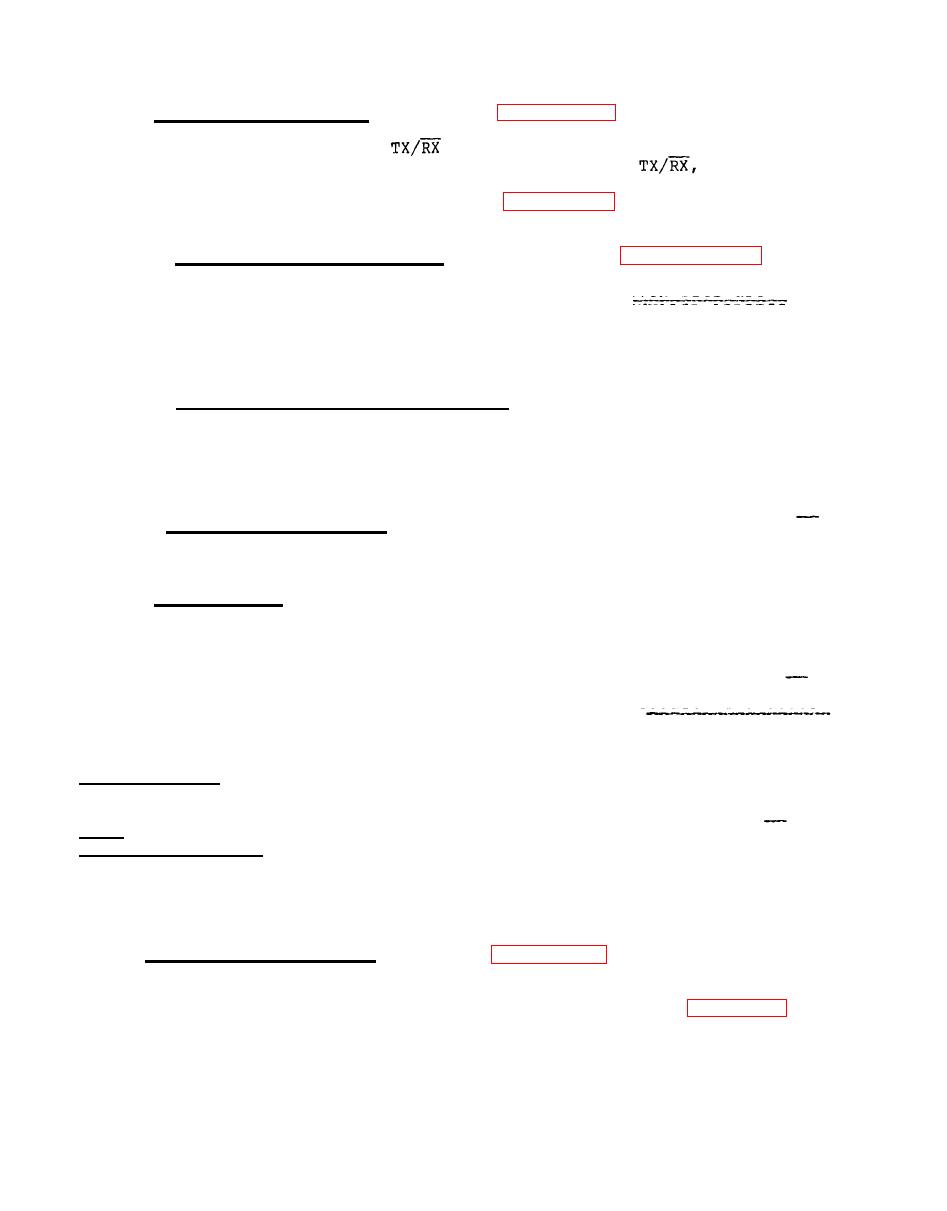 |
|||
|
|
|||
|
|
|||
| ||||||||||
|
|
 TM 32-5865-216-24&P
CCA control circuit stores RF switch and stepper motor position data
inputs from decoder CCA A4 into a
and converts the subband and
subband,
25-bit output to feedback CCA S4. In addition, the
and data strobe inputs from decoder CCA A4 are converted into drive
pulse outputs to motor control CCA A2. Table 3-3 lists the control
signals accessed from the control logic CCA test points.
switch decoder circuit U16 through U19, U21B, and U22B converts the
B0 through B4 data into a 32-bit word. The upper seven bits are
applied to the status circuit (U9) and provide the INVALID ADDRESS
output to decoder CCA A4. The lower 25 bits (Band 0 through Band 24)
contain a single low bit that defines the required switch position.
The Band 0 through Band 24 signals are applied to feedback CCA S4.
circuit U1 and U8 compares the B0 through B4 input with data stored
in present switch position latch U15. Comparison results determine
the stepper motor M1 rotation direction. The motor direction control
output of U1 passes to two-phase motor command generator U6, U13, and
U20 and to extender CCA AS.
signal specifies the transmit or receive operating mode and is
accompanied by a data strobe signal. NAND gate U10B and OR gate U11A
convert the data strobe input into a COUNTER RESET STB signal that
resets counters U7 and U14. Motor control flip-flop U4B is cleared
by the PWR ON RESET output of multivibrator U2B. The 200-Hz output
of motor drive clock AR1A passes to the CLK input of U4B and the
motor command generator. When clocking starts, the motor command
generator provides drive pulse outputs (Al, A2, B1, B2) to motor
control CCA A2, the Q output of U4B is NANDed by U22A with the TX/RX
signal to provide a low READY output to the status circuit of decoder
CCA A4, and counters U7 and U14 are triggered by the PARALLEL LOAD STB
output of U12C. The low READY signal inhibits receipt of subsequent
TX/RX inputs. If stepper motor Ml is not properly positioned when
counters U7 and U14 are fully incremented, the U7 output sets MTR
DRIVE TIMEOUT low to prevent continuous motor operation. When stepper
motor Ml reaches the proper position, the low bit of the Band 0
through Band 24 output is applied through NAND gate U12B as the SW
FDBK signal. The outputs of flip-flop U4B change states to set the
MTR DRIVE TIMEOUT low, to inhibit the motor command generator, and to
set the READY output high. As READY goes high, the MEM STB output of
U3B triggers strobe generator U2. The Q output of U2A clocks present
switch position latch U15 to store the B0 through B4 data.
CCA converts A1, A2, B1, and B2 drive pulses from control logic CCA
A3 into power outputs to stepper motor M1. The pulses are two-phase,
with Al high when A2 is low and B1 high when B2 is low. Table 3-4
lists the signals accessed from the motor control CCA test points.
|
|
Privacy Statement - Press Release - Copyright Information. - Contact Us |